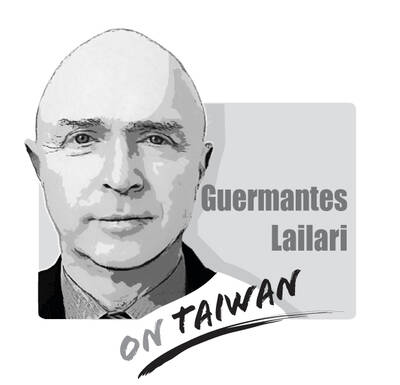Minister of Education (MOE) Cheng Ying-yao (鄭英耀) last week announced that the Sports Administration would ask the about 3,800 public schools below college level to take an inventory of their sports equipment and offer some of them for public use outside school hours within two weeks. The next day, the ministry abruptly announced that the policy was “well-intended,” but could easily cause “misunderstanding,” so it would re-evaluate the policy and communicate further with schools.
Cheng said the measure would give residents free access to basketballs, volleyballs and other sports equipment, and would help promote the government’s “fitness for all” policy. However, it immediately sparked a backlash from schools. Junior-high and elementary-school teachers are already facing a multitude of complaints from parents and a heavy administrative workload, among other overwhelming work demands, the National Federation of Education Unions said. Giving the public free access to schools’ sports equipment would only add more administrative work for teachers and staff, as they would need to manage the equipment, and deal with equipment losses, damage and other issues after work hours.
Some schools said that opening campuses for public use had already resulted in facility damage, created trash and sanitation issues, especially in restrooms, and also raised security concerns. The schools added that they needed more funds and staff to fulfill such a policy, while protecting students’ rights to sports equipment and facilities. The federation urged the ministry to instead address pressing issues such as staff shortages, under-resourced schools and overworked teachers.
Democratic Progressive Party Legislator Wu Pei-yi (吳沛憶) said the “ill-considered” policy was “out of touch,” urging the ministry to halt it and questioning if free access to the equipment would meaningfully promote fitness for all.
On Thursday morning, the ministry said that it would provide regular funding for ball-related sports gear, which would be viewed as consumable items, and offered to the public such as “courtesy umbrellas.” However, later that afternoon, it scrapped the policy and assured schools that it would not be implemented without careful consideration.
Similarly, last month, 11 medical groups issued a statement to oppose the ministry’s plan of allowing three universities — which were permitted to admit government-funded postbaccalaureate medical students under special provisions between 2022 and this year — to continue admitting such medical students next year, but changing it to be self-funded and increasing the admission quota. Medical schools can admit a maximum of 1,300 students per year, a government-set quota that has not changed for more than two decades. Medical associations said the ministry’s plan would break long-established rules by raising the enrollment quota. They had even planned protests, but the Executive Yuan shortly thereafter concluded that the annual cap would remain unchanged.
The ministry later issued a statement saying it did not intend to exceed the 1,300 medical student enrollment cap, even though it was planning to allow the transition of the three universities’ postbaccalaureate medical departments.
However, the policy to allow free access to ball equipment on school campuses was clearly not a “misunderstanding,” but was instead poorly planned without feasible supporting measures. Perhaps it was a spur of the moment remark from the minister. It and the medical student policy show that the ministry must improve communication with schools and stakeholders. A “well-intended” government policy requires careful planning and communication with stakeholders, or it could disrupt people’s lives and harm public trust in the government.

Chinese state-owned companies COSCO Shipping Corporation and China Merchants have a 30 percent stake in Kaohsiung Port’s Kao Ming Container Terminal (Terminal No. 6) and COSCO leases Berths 65 and 66. It is extremely dangerous to allow Chinese companies or state-owned companies to operate critical infrastructure. Deterrence theorists are familiar with the concepts of deterrence “by punishment” and “by denial.” Deterrence by punishment threatens an aggressor with prohibitive costs (like retaliation or sanctions) that outweigh the benefits of their action, while deterrence by denial aims to make an attack so difficult that it becomes pointless. Elbridge Colby, currently serving as the Under
The Ministry of the Interior on Thursday last week said it ordered Internet service providers to block access to Chinese social media platform Xiaohongshu (小紅書, also known as RedNote in English) for a year, citing security risks and more than 1,700 alleged fraud cases on the platform since last year. The order took effect immediately, abruptly affecting more than 3 million users in Taiwan, and sparked discussions among politicians, online influencers and the public. The platform is often described as China’s version of Instagram or Pinterest, combining visual social media with e-commerce, and its users are predominantly young urban women,
Most Hong Kongers ignored the elections for its Legislative Council (LegCo) in 2021 and did so once again on Sunday. Unlike in 2021, moderate democrats who pledged their allegiance to Beijing were absent from the ballots this year. The electoral system overhaul is apparent revenge by Beijing for the democracy movement. On Sunday, the Hong Kong “patriots-only” election of the LegCo had a record-low turnout in the five geographical constituencies, with only 1.3 million people casting their ballots on the only seats that most Hong Kongers are eligible to vote for. Blank and invalid votes were up 50 percent from the previous
Japanese Prime Minister Sanae Takaichi lit a fuse the moment she declared that trouble for Taiwan means trouble for Japan. Beijing roared, Tokyo braced and like a plot twist nobody expected that early in the story, US President Donald Trump suddenly picked up the phone to talk to her. For a man who normally prefers to keep Asia guessing, the move itself was striking. What followed was even more intriguing. No one outside the room knows the exact phrasing, the tone or the diplomatic eyebrow raises exchanged, but the broad takeaway circulating among people familiar with the call was this: Trump did